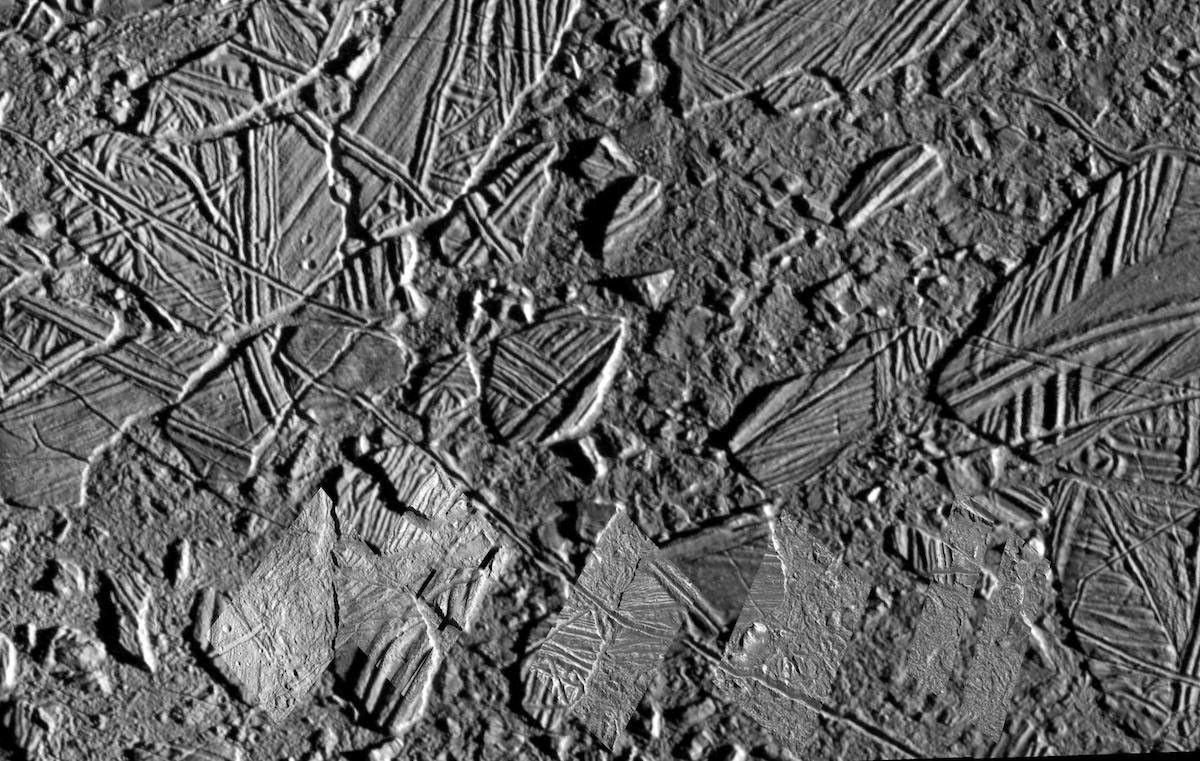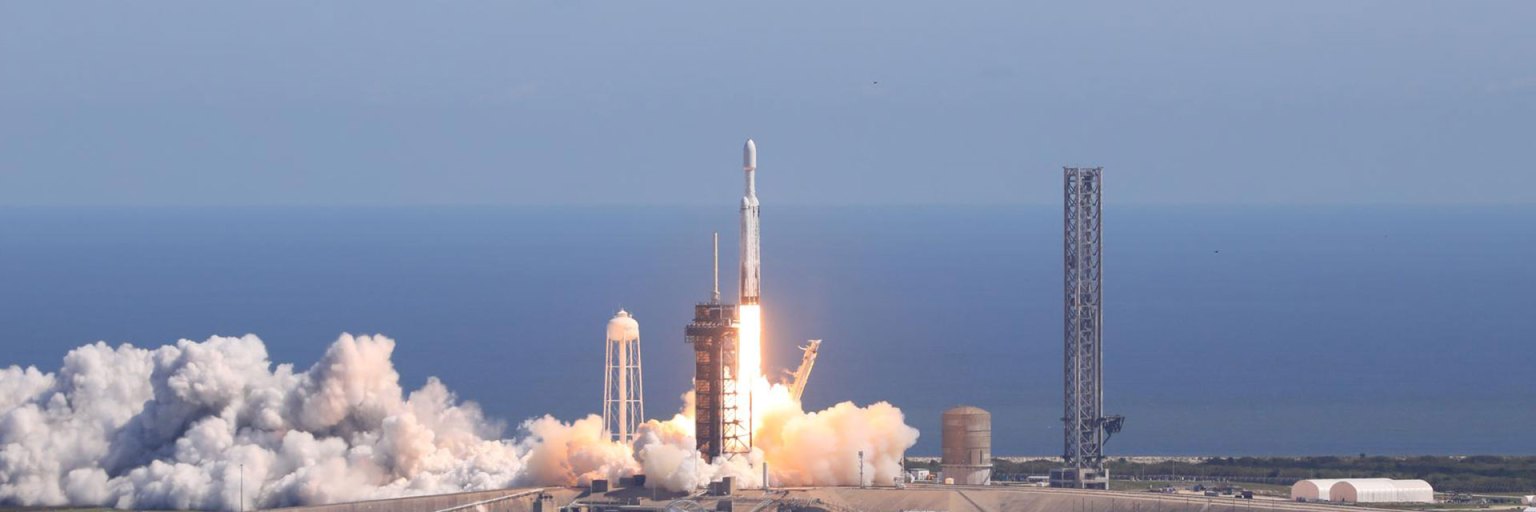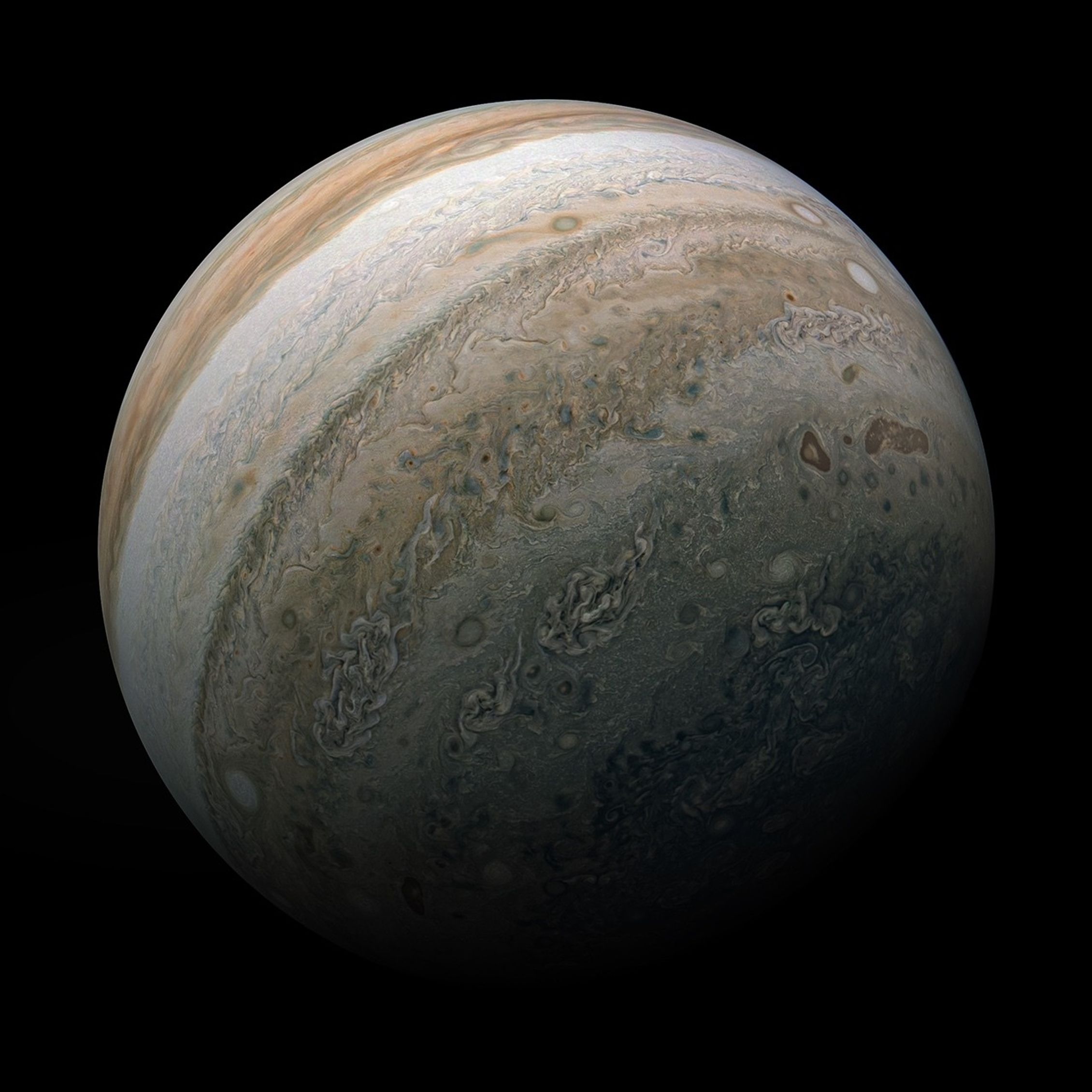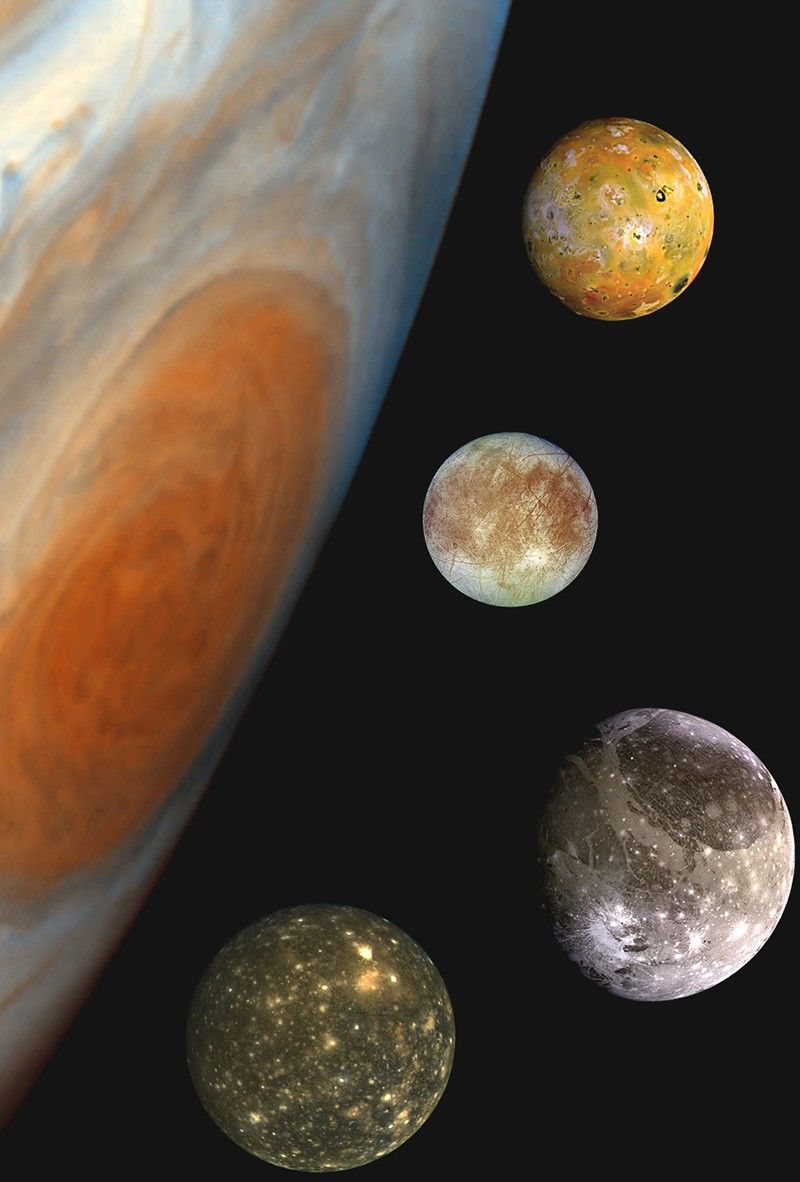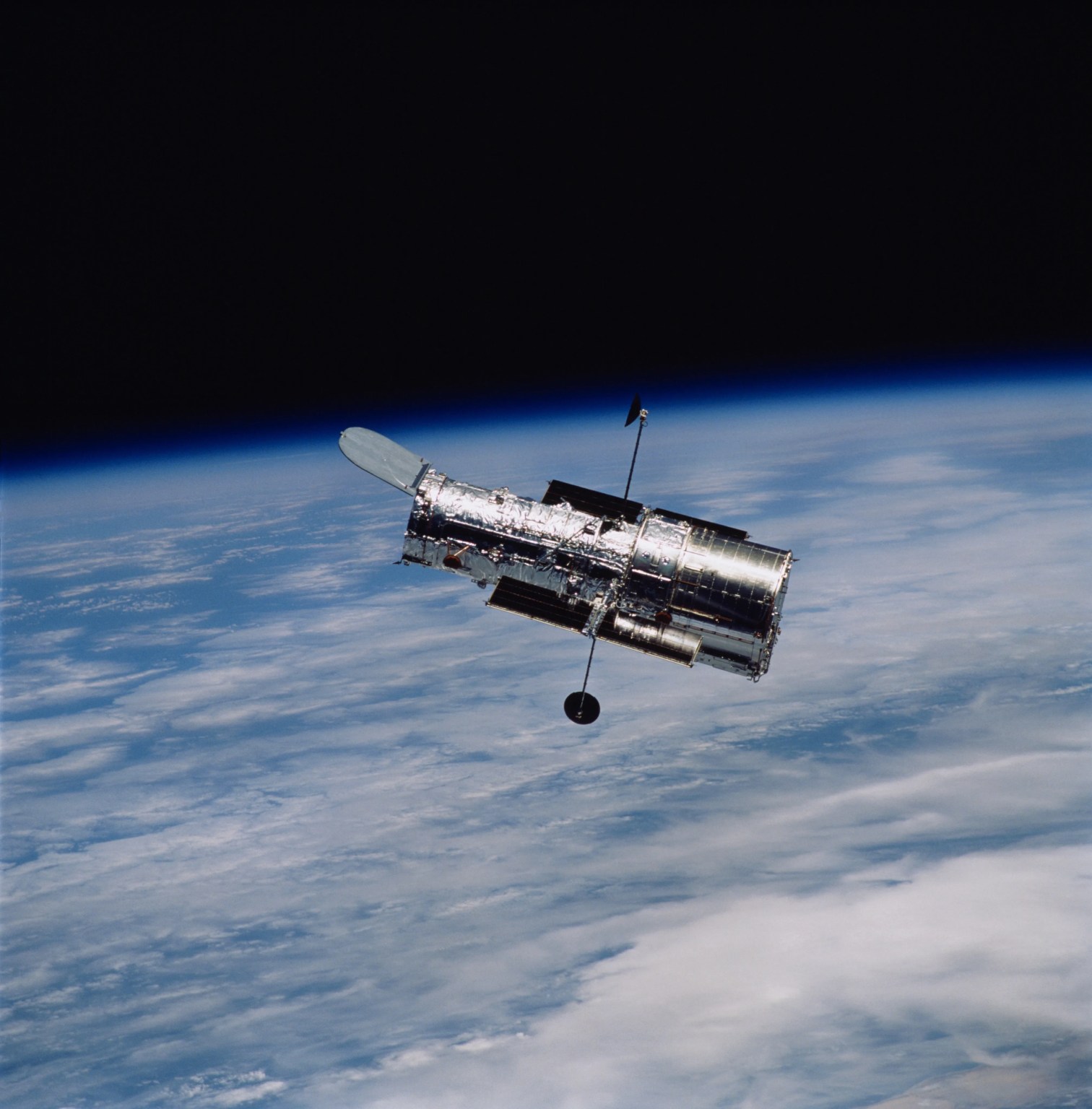This mosaic of the Conamara Chaos region on Jupiter's moon, Europa, clearly indicates relatively recent resurfacing of Europa's surface. Irregularly shaped blocks of water ice were formed by the break up and movement of the existing crust. The blocks were shifted, rotated, and even tipped and partially submerged within a mobile material that was either liquid water, warm mobile ice, or an ice and water slush. The presence of young fractures cutting through this region indicates that the surface froze again into solid, brittle ice.
The background image in this picture was taken during Galileo's sixth orbit of Jupiter in February 1997. Five very high resolution images which were taken during the spacecraft's twelfth orbit in December 1997 provide an even closer look at some of the details. This mosaic shows some of the high resolution data inset into the context of this tumultuous region.
North is to the top of the picture, and the sun illuminates the scene from the east (right). The picture, centered at 9 degrees north latitude and 274 degrees west longitude, covers an area approximately 20 by 30 miles (35 by 50 kilometers). The finest details visible in the very high resolution insets are about 22 yards (20 meters) across, and in the background image, 110 yards (100 meters) across. The insets were taken on Dec. 16, 1997, at ranges as close as 550 miles (880 kilometers) by the Solid State Imaging (SSI) system on NASA's Galileo spacecraft.



























